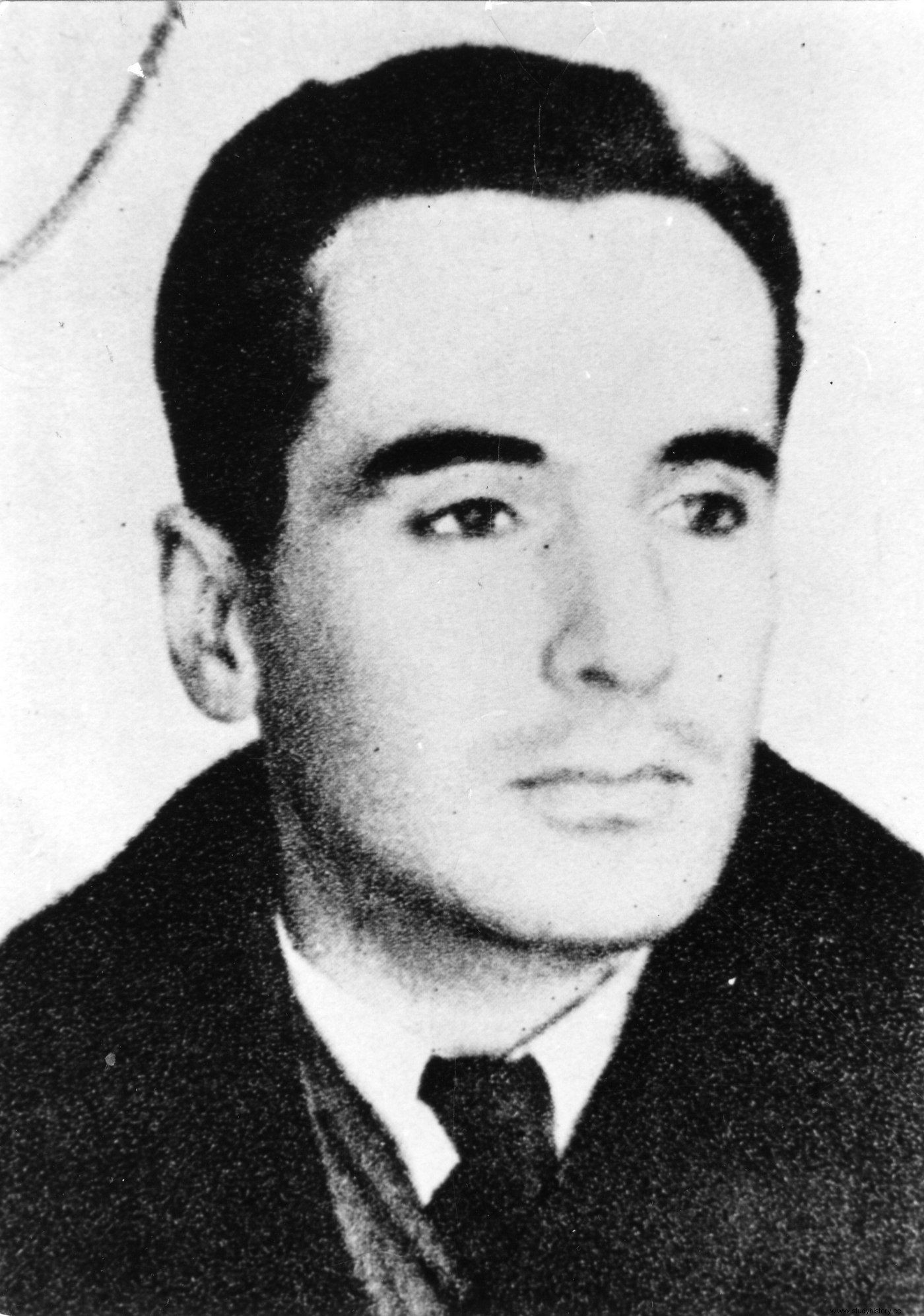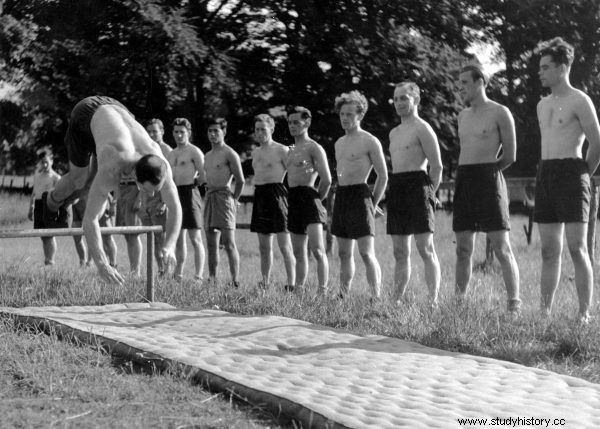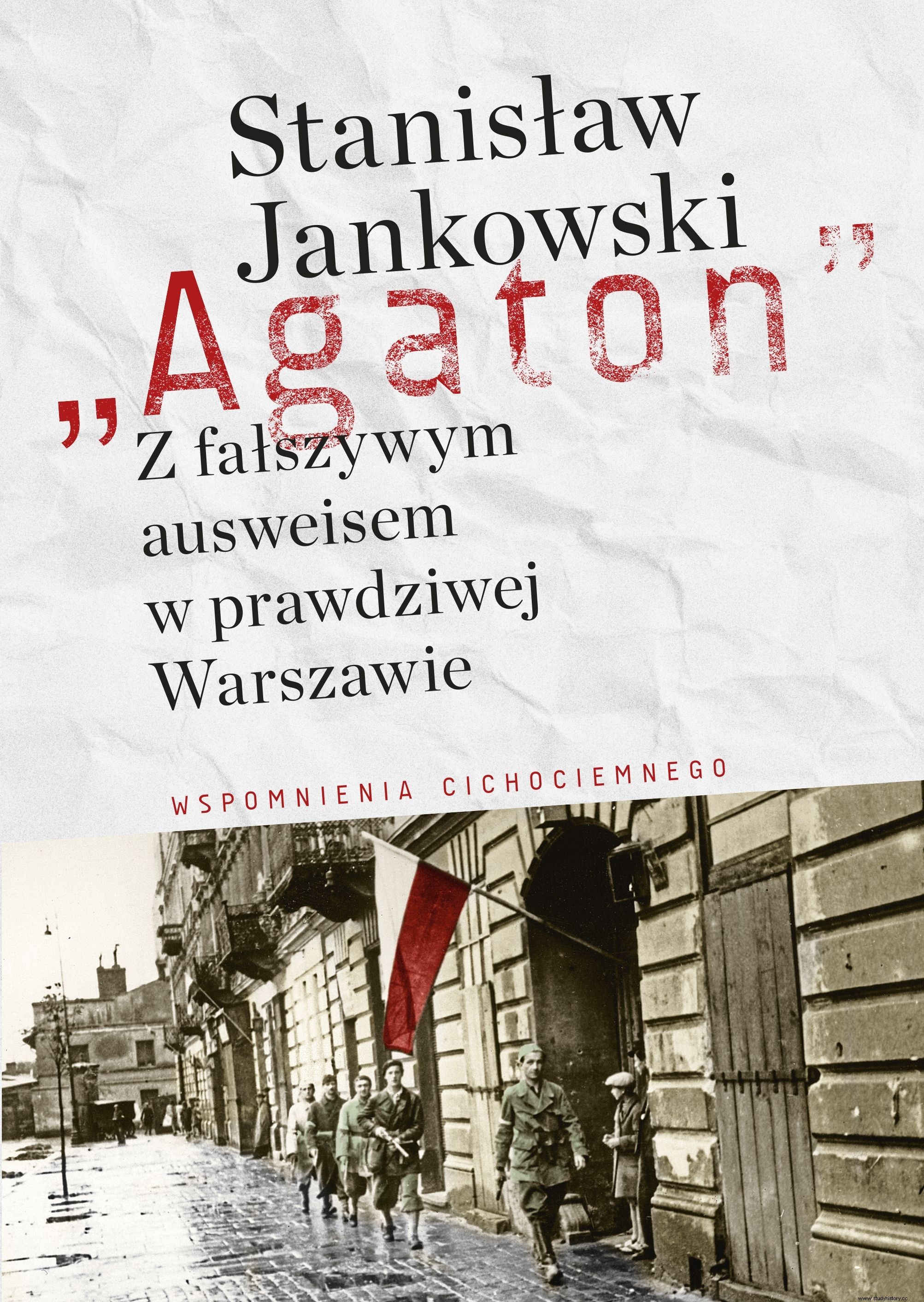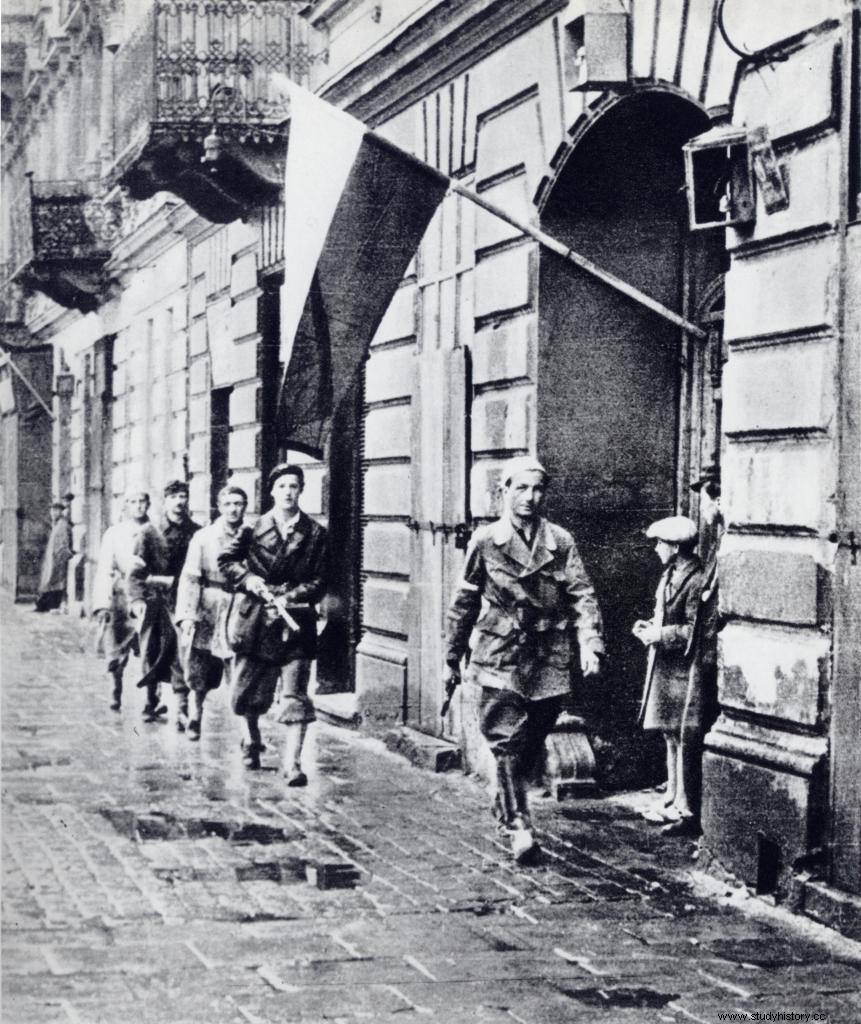Before the war, he dreamed of building houses. Instead, he is responsible for creating a fictional reality wrapped in false passes and permits. With their help, he cheated the Germans from Warsaw to Paris. How did he do that?
General Julius von Hallmann was a strange figure. A fortification specialist, formally assigned to the Eastern Front, he spent his entire career traveling between Warsaw and Paris. Here he tried to recruit workers to the east, there he helped in the works on the fortification of the Atlantic coast.
Reading his memoirs, one gets the impression that he spent just as much time resting. Immediately after arriving in Paris, he appeared at the city headquarters, took care of all the formalities, washed and changed at the hotel, and then, as he wrote:"I went to Halle aux Fruits, I bought a basket of fruit that was valid in a given season (...) and I went to some quiet place , for example, on the Seine and ate as much as I wanted, and my stomach was fine. "
He must have had a great time. Nobody except him knew that his name was not von Hallmann, but Stanisław Leski, "Bradl". He was a courier of the Polish underground. The general pretended to make it easier for him to travel . The masquerade lasted until the spring of 1943. All thanks to his courage, the Warsaw tailor who made him a general uniform, and Stanisław Jankowski "Agaton", whose false documents carried "Bradla" all over Europe.
Chasing the war
Four years earlier, Jankowski was not yet a specialist in counterfeiting documents. He also did not think about becoming a cichociemny - in 1939 that word was not there yet. Instead, he led a quiet and happy life. He had a wife, he had a child recently, he worked as an architect - just as he dreamed.
In the book "With a false ausweis in real Warsaw" he mentioned that he worked:
at Pniewski, where I was involved in a competition for the design of the Polish Radio buildings, after which the professor offered me to stay in the studio permanently. We were brilliantly successful. After winning the competition, we were just finishing the preliminary design of Polish Radio. We walked as proud as peacocks .
With each passing week of summer 1939, however, joy gave way to more and more anxiety. Finally, on Wednesday, August 23, Jankowski received a summons for mobilization. From that moment on, his almost three-year pursuit of war began. First he went to Płock, where his regiment was stationed. There he was informed that he was not needed. He returned to Warsaw, where he went to the City Headquarters. He asked for an assignment. Any. To no avail.

It was thanks to the documents provided by "Agaton" that Kazimierz Leski could travel around Europe pretending to be General Julius von Hallmann.
A moment later, the war broke out. “When on September 1 I was woken up by sirens announcing an air alert for Warsaw, I was convinced that this was an air defense exercise. Alarm sirens chimed more and more. The one on the roof on the corner of Aleja Niepodległości and Wawelska Street was the loudest one, "he wrote in his memoirs.
The general mobilization announced the next day also extended to him. He was sent to Grodno and then to Vilnius. Before he could take part in the fight, however, he had already fled to Lithuania. Three months later he went to France, and another six months later - to Great Britain.
The beginning of his stay in the UK did not herald any changes in Jankowski's life. He himself still felt that he was fleeing the war. Until December 1940. It was then that he received an offer he could not refuse:Improving the Military Administration Course. He was not satisfied. Me for the Administration Course? Away from the battery, away from the war, in the London office! What do I have to do with this? Damn it! ” took notes after years.
It quickly turned out that behind this boring name was by no means a boring task. The discouraged recruit learned from a colonel that "The Military Administration Training Course is the code name of the School of Intelligence Officers to which you were selected." Jankowski was supposed to become a quiet man.
Up to three flights art
The following months were filled with hundreds of hours of study and training. It was like an accelerated course of warfare . They were trained in intelligence techniques, diversion, and the basics of chemistry, communication, and encryption. They practiced parachute jumping, judo and learned about the realities of the occupation reality, necessary to be able to survive in the country after reaching the country. Their final examiners, Gestapo and Abwehr officers, did not forgive even the slightest mistakes.
But the training itself was carried out in such a way as to give them a hard time. As Jankowski noted:
The ability to fall to the ground was taught by a very malicious swing. Seemingly ordinary, as if nothing had happened. When the adept sat on it for the first time and woke up well, he remembered his childhood years. The instructor standing next to us talks to us on an indifferent topic. A slight movement of the hand and an unexpectedly unfastened victim lands in the least expected position.

Cichociemni underwent intensive fitness training. Illustrative photo.
All this so that this one most important landing in Poland would not turn out to be the end of their task. Sometimes, however, before there was a jump, Cochociemny had to run a bit. This was the case with the Agaton, whose plane was turned twice for various reasons. When he got on board the machine for the third time, he heard from the navigator that now he would be delivered to the place. It happened on the night of March 3-4, 1942. As he flew, he watched the frozen shores of the Baltic Sea and the lights flashing in the distance. He was waiting for the moment when he would hear “Lights! Are!". That was supposed to be a sign that they were over the landing field.
He was jumping fourth. “So many times I have wondered what I will feel when I jump. What will be my first reaction? Joy? Curiosity? I should have been touched and I was delighted. " The landing was perfect. On the ground, they were quickly taken over by the local Home Army unit, which handed them over to Warsaw.
King of the forgers
After a period of compulsory quarantine, which was the next stage of learning about the occupation, "Agaton" was ordered to organize a unit to prepare false documents. It turned out to be a bull's eye. Jankowski quickly achieved absolute mastery in his new profession .
He started modestly - with an attic in Krakowskie Przedmieście and one female liaison officer. During these first weeks he was bored. Only with time, "I received blanks and templates of the simplest documents. The job was becoming more independent and more interesting. " His real pride are Ostbahn's railway ID cards, very popular and desirable in the conspiracy, because they facilitate travel by trains and protect against round-ups. He quickly added birth certificates to this. Usually from outside Warsaw - because it was more difficult to check.

A false document made in the "Agaton" studio.
"I signed the parish priests of various provincial parishes and even - I'm afraid - that I won them some patron saints by composing round seals ", He recalled, adding that he had most trouble typing Latin texts. He was not taught the language of Tacitus and Caesar during the Cichociemni course, and he remembered only a few sentences from school. How did he make sure he wasn't making mistakes? "I went to proofreading at a priest friend of mine in the church of St. Anna. He was willing to help me and promised absolution in advance for all the forgery, "he reported.
Weeks and months passed, and the team of "Agaton" kept getting bigger and better. After all, there was no document they could not forge. From the most common ones, such as Kennkarts, Ausweis, certificates from the employment office, night passes or food stamps, to travel papers.
The latter were issued individually for each courier, depending on the route or possessed skills and knowledge of languages. Jankowski "produced" employees of the Todt organization, officials of a company producing canned food for the Wehrmacht, and even agents of a German trading company. Whenever necessary, he produced false documents also for the… French market.
However, the best evidence of the quality of work created by the unit was the "original" documents. As he wrote:
The enormous amount of documents required to make it difficult for us to move and to facilitate control for the Germans turned (...) against the occupiers. A paper jungle has emerged in which (...) even the Germans have ceased to orientate themselves .

The article was based, inter alia, on the book "With a false ausweis in real Warsaw" (Bellona and National Center for Culture 2019).
Taking advantage of this chaos, Agaton produced papers that were completely fictitious. They were printed on original paper with watermarks, impeccable seals and signatures, and annotated either "top secret" or "confidential." It was impossible to spoil them, because there was nothing to compare them to. "With the German respect for documents and seals - the wardrobe sounded great."
Jankowski not only recreated reality, but also created his own.
Goodbye Warsaw. Hello Warsaw
While protecting others, he could not protect his loved ones at the same time. In the summer of 1942, his wife and mother-in-law were arrested by the Gestapo. They were sent to Auschwitz, where they died before the end of the year. At the same time for his daughter, who did not remember him before September 1, 1939, he was just an "uncle" . He was afraid to tell her who he really was so that she would not accidentally let it slip. The conspiratorial secret was the most important.
The closest to discovering the truth to her was on August 1, 1944, just before W. But he resigned. He did not know if he would survive, and he did not want to expose the child to the loss of the other parent. And he had more than one opportunity to die. Fighting in Wola, Stawki and Stare Miasto every now and then brought a chance for death. As if that were not enough, together with three of his people he was appointed to establish communication between the Old Town and Żoliborz. Passing through the German positions, they miraculously escaped death.

"Agaton" platoon patrol. Stanisław Jankowski at the head. The first days of August 1944.
However, the real challenge turned out to be something else - the channels. He passed these "Agaton" seven times. Wading in the foul-smelling sludge, stumbling over objects lying on the bottom, banging his head against low ceilings, or finally struggling with the darkness surrounding him, sought help for a dying Warsaw . All his attempts to bring relief to the city ended in failure.
After the fall of the Warsaw Uprising, he was taken prisoner as the last adjutant of General Tadeusz Bor-Komorowski. He said goodbye to the Warsaw of his youth. He returned to her only after a few years. This time as an architect.
